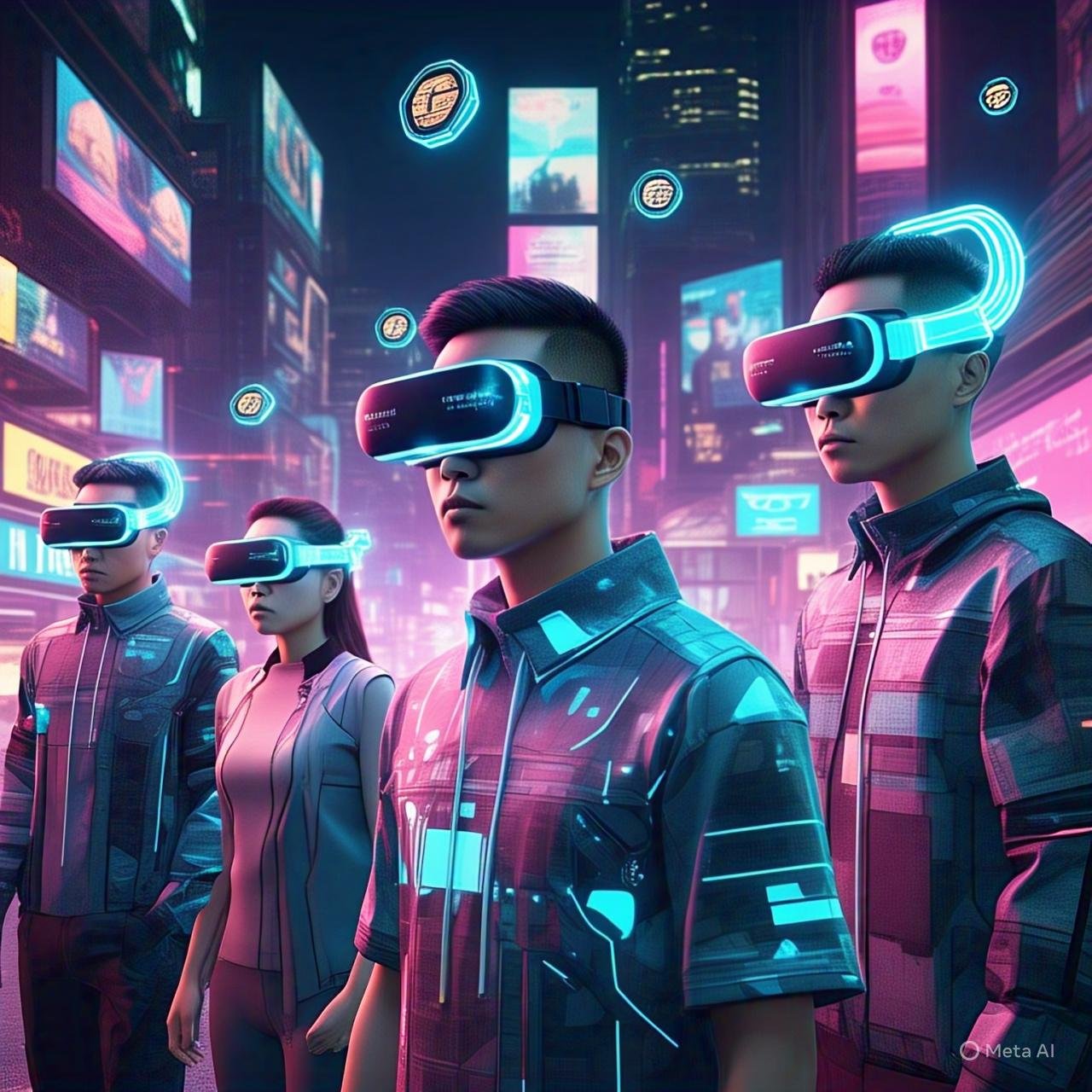Explore how AI, VR, and blockchain are shaping the 2024 Metaverse, from Meta’s Quest 3 to virtual real estate in Decentraland. Discover trends, use cases, and the future of digital interaction.

Imagine stepping into a neon-lit digital universe where AI-powered avatars greet you, blockchain tokens float like digital confetti, and virtual cities pulse with endless possibilities. This is the Metaverse in 2024—a fusion of cutting-edge AI, immersive VR, and decentralized blockchain ecosystems. Once a sci-fi dream, this interconnected realm is now redefining how we work, play, and own digital assets. Let’s dive into the technologies driving this revolution.
Keyword Spotlight: “Metaverse trends 2025”
The hardware powering the Metaverse has taken a quantum leap. Meta’s Quest 3 leads the charge with breakthroughs like:
Mixed Reality (MR) Overlays: Blend physical and digital worlds (e.g., holographic workstations in your living room).
AI-Powered Eye Tracking: Avatars that mirror your expressions in real time.
Affordable Access: Priced 30% lower than Apple’s Vision Pro, democratizing VR adoption.
Meanwhile, Apple Vision Pro is carving its niche with enterprise applications:
3D Collaborative Workspaces: Architects and engineers design in lifelike 3D.
Spatial Computing: Navigate apps with hand gestures, redefining UX.
Stat Alert: Over 20 million VR headsets shipped in Q1 2024, per IDC.
Keyword Spotlight: “AI in virtual reality”
AI isn’t just enhancing the Metaverse—it’s becoming its heartbeat. Startups like Soul Machines craft hyper-realistic avatars that:
Learn Your Preferences: Suggest events, friends, or NFT art based on your behavior.
Power NPCs: AI-driven characters in games like Fortnite now hold dynamic conversations.
In 2025, tools like Inworld AI let users create custom avatars in minutes, blending GPT-5’s conversational depth with Unreal Engine’s visuals.
Keyword Spotlight: “Blockchain metaverse projects”
Blockchain ensures trust in this decentralized universe. Key innovations:
Decentraland’s Virtual Land Boom: Parcels near "Genesis Plaza" sold for $1.2M in 2024, hosting Gucci stores and Snoop Dogg’s concerts.
NFT 2.0: Dynamic NFTs that evolve (e.g., art that changes with the weather or your mood).
DAOs Governing Worlds: Communities vote on Metaverse rules via tokens (e.g., Somnium Space’s governance model).
Case Study: Dubai’s Virtual Assets Regulatory Authority (VARA) now oversees Metaverse transactions, boosting investor confidence.
Virtual Concerts: Travis Scott’s Astroworld 2.0 in Fortnite drew 12M live attendees, monetized via NFT tickets.
Corporate HQs: Companies like Accenture host global teams in VR offices, cutting travel costs by 40%.
NFT Marketplaces: OpenSea’s Metaverse hub lets users trade virtual fashion for avatars, a $3B market in 2024.
Brain-Computer Interfaces (BCIs): Elon Musk’s Neuralink aims to let users “feel” virtual objects by 2025.
Regulation: The EU’s Metaverse Act drafts rules for digital identity and asset protection.
The 2025 Metaverse is no longer a niche—it’s a $500B economy where AI, VR, and blockchain converge. Whether you’re investing in virtual land, designing an avatar, or attending a concert in Decentraland, the future is here.
Your email address will not be published. Required fields are marked *